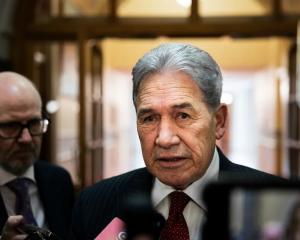
But the proximity ban only applies to specialist stores. It does not apply to diaries or supermarkets that might already be within 300m of a school or marae, though they would be restricted to selling mint, menthol and tobacco flavours.
All vaping devices will need to have removable batteries and child-safety mechanisms such as buttons to make them harder to operate, Health Minister Ayesha Verrall announced, following new rules that the Cabinet had previously agreed to in June.
"Names like ‘cotton candy’ and ‘strawberry jelly donut’ will be prohibited. Only generic names which accurately describe the flavours can be used, such as ‘orange’ or ‘berry’," she said.
"We have also reduced the maximum concentration of nicotine allowed in vapes in line with the latest evidence. The maximum concentration of nicotine allowed in single-use vapes is reduced to 20mg/mL. The maximum nicotine concentration is set at 28.5mg/mL for reusable vaping products that contain nicotine only in salt form."
Verrall said the levels have to be high enough for vaping to continue to be an effective way for smokers to stop smoking, but low enough to limit the risk of nicotine addiction, especially for young people, and "particularly from cheap single-use vaping products".
The concentration limit will be cut from the current level of 50mg/mL, which the Asthma Foundation equates with smoking 25 to 50 cigarettes.
"And because of the way the nicotine is often incorporated into vapes (as a salt), it is less harsh on the throat and therefore more easily palatable, making it more addictive," the foundation says.
A 20mg/mL is in line with the European Union.
"The impact of these regulations will continue to be monitored," Verrall said.
"Nothing is off the table in terms of what we need to do to make sure we see a reduction in youth vaping while retaining sufficient tools for smoking cessation."
A recent study found 10 per cent of students in Year 10, who are aged 13 to 14, were vaping daily - up from 9.6 per cent in 2021 and more than tripling since 2019.
Another study found the number of New Zealanders aged 15 to 17 who vaped every day quadrupled in three years, from about 2 per cent in 2018-2019 to about 8 per cent in 2021-2022.
And in January last year, the Herald reported Ministry of Health data that detailed how at least one in four New Zealand schools - 894 - were within 1km of a vape store, and at least 77 were within 250m.
Paediatrician Dr Colette Muir said the Paediatric Society of New Zealand was "extremely worried" by the level of youth vaping in New Zealand.
"While the health policy intention regarding vaping was to reduce smoking it is now clear that vaping is causing significant harm to Aotearoa’s tamariki and rangitahi," Muir told the Herald in May.
"More needs to be done to prevent youth who do not smoke taking up vaping in the first place."
The announcement follows a recent poll that found more than two-thirds of New Zealanders want to follow Australia’s lead and make vapes available by prescription only.
"Should we ban recreational vaping?" was the question posed in the latest Newshub Reid Research poll. A total of 68 per cent of respondents replied yes, and 27 per cent disagreed.












